Tassimo Latte vs Cappuccino: Ultimate Guide to Your Favorite Brews
Par un écrivain mystérieux
Last updated 31 mai 2024
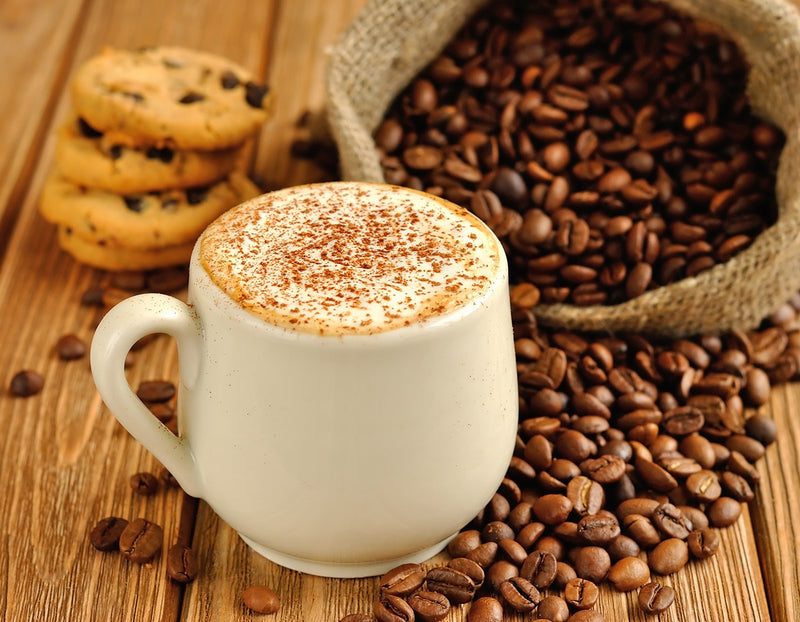
Are you a Tassimo coffee lover who wants to know the key differences between two popular coffee drinks - Tassimo latte and cappuccino? In this ultimate guide, we're breaking down the milk, espresso, and foam used, the brewing methods, and the taste profiles of these two drinks. Get ready to discover which one will be your new go-to for a satisfying and delicious coffee experience! Tassimo Latte Vs Cappuccino: Understanding the Difference Ingredients and Preparation When comparing a Tassimo latte and cappuccino, it is essential to note the differences in ingredients and preparation. Both coffee drinks are made using espresso, milk, and foam. However, the ratio of these components varies between the two beverages. A latte contains more steamed milk, resulting in a creamier texture and smoother flavor. In the case of a Tassimo latte, the beverage is prepared by
Are you a Tassimo coffee lover who wants to know the key differences between two popular coffee drinks - Tassimo latte and cappuccino? In this
Are you a Tassimo coffee lover who wants to know the key differences between two popular coffee drinks - Tassimo latte and cappuccino? In this ultimate guide, we're breaking down the milk, espresso, and foam used, the brewing methods, and the taste profiles of these two drinks. Get ready to discover which one will be your new go-to for a satisfying and delicious coffee experience! Tassimo Latte Vs Cappuccino: Understanding the Difference Ingredients and Preparation When comparing a Tassimo latte and cappuccino, it is essential to note the differences in ingredients and preparation. Both coffee drinks are made using espresso, milk, and foam. However, the ratio of these components varies between the two beverages. A latte contains more steamed milk, resulting in a creamier texture and smoother flavor. In the case of a Tassimo latte, the beverage is prepared by first inserting a milk pod into the Tassimo coffee pod machine, followed by an espresso pod. The machine produces a velvety milk foam before adding the espresso, which gives the latte its distinct creamy consistency. In contrast, a cappuccino has less milk and more foam. This leads to a stronger coffee flavor and a lighter, frothier texture. To prepare a Tassimo cappuccino, the process is similar to making a latte, but the milk foam is denser. The espresso pod is inserted after removing the milk pod, allowing the espresso to mix with the thick foam, giving the cappuccino its characteristic bold taste and airier texture. Flavor and Aroma The variations in the milk-to-foam ratio in Tassimo lattes and cappuccinos are responsible for their differing flavors and aromas. As lattes have a higher milk content, they are creamier and have a milder taste. This makes them an excellent choice for those who prefer a subtler coffee flavor, allowing them to enjoy the soothing aroma and taste of the steamed milk. On the other hand, cappuccinos boast a stronger coffee flavor due to the smaller amount of milk and defined layers of foam. As a result, they provide a more robust aroma and taste, appealing to those who appreciate a bolder, more intense coffee experience. To sum up, Tassimo latte and cappuccino enthusiasts can find satisfaction in the nuances of each drink's preparation, taste, and aroma. The primary difference lies in the milk-to-foam ratio, resulting in distinct textures and flavors that cater to a wide range of preferences. The Role of Espresso Espresso plays a critical role in differentiating Tassimo latte and cappuccino. Let's explore how a shot of espresso is the foundation for these popular coffee drinks and other espresso-based beverages. Shot of Espresso An espresso is a concentrated form of coffee made by forcing hot water through finely ground coffee beans at high pressure. It has a rich, bold taste and is often enjoyed as a stand-alone beverage. Espresso forms the base for popular drinks like lattes, cappuccinos, and macchiatos. Extraction time: 25-30 seconds Caffeine content: Approximately 85 milligrams per double shot Ratio: 1:2 (20 grams of ground coffee to 40 grams or 1.4 ounces of espresso liquid) Espresso Drinks Latte A latte is a coffee drink made by adding steamed milk to a shot or two of espresso. The milk's volume is higher than that of espresso, resulting in a milder taste compared to a cappuccino. Lattes typically have a creamy texture due to the steamed milk and a small amount of milk foam. They are often enjoyed with flavored syrup or a dusting of cocoa powder for added flavor. Espresso:milk ratio: 1:2 or 1:3 Milk foam: Minimal - about 1 cm (0.4 inches) thick Cappuccino A cappuccino, on the other hand, is made using equal parts espresso, steamed milk, and milk foam. This balance gives it a stronger espresso taste and a smooth, velvety texture due to the foam layer on top. You can find cappuccinos served in smaller cups than lattes, allowing for better appreciation of the coffee flavor. Espresso:milk:foam ratio: 1:1:1 Cup size: Smaller than a latte Macchiato A macchiato is an espresso-based beverage with a splash of milk or milk foam atop the espresso shot. The milk is usually steamed and lightly foamed, but the quantity is significantly smaller than in a latte or cappuccino. Macchiatos tend to showcase the taste of the espresso while softening its intensity with a hint of milk. Espresso:milk ratio: 1:0.5 (approx) Milk foam: Light layer on top Milk Variations in Latte and Cappuccino Milk Foam and Layer of Foam In both lattes and cappuccinos, milk foam plays a significant role in creating the distinct texture of each drink. A cappuccino typically has a thicker layer of milk foam, which helps create a more robust espresso taste. On the other hand, a latte has a thinner layer of milk foam, which makes the coffee flavor milder and creamier. Steamed Milk vs Froth The preparation of milk in lattes and cappuccinos involves steaming and frothing. Steamed milk is smooth and creamy, while frothed milk is lighter and more airy. A latte has more steamed milk, which results in a creamier texture. In contrast, a cappuccino uses equal parts espresso, steamed milk, and milk foam, giving it a more balanced flavor profile. Hot Milk and Different Milk Types While hot milk is a standard ingredient in both cappuccinos and lattes, various milk types can be used to create unique and delightful variations of these popular drinks. Some popular options include: Oat milk: This plant-based milk offers a creamy texture and mild oat taste that complements the coffee flavors in lattes and cappuccinos. Almond milk: Often used as a dairy-free alternative, almond milk has a subtle nutty taste and lighter texture that can be used in both drinks. Soy milk: Another plant-based option, soy milk has a thicker consistency and provides a slightly sweet, nutty taste to the beverage. Skim milk: For a lower calorie and fat option, skim milk can be used in both lattes and cappuccinos, although it may result in a less creamy texture. Overall, the choice of milk can significantly impact the taste, texture, and overall experience of enjoying a latte or cappuccino. By understanding and experimenting with milk variations in lattes and cappuccinos, you can find the perfect combination that suits your preferences. Moreover, while personal preferences play a pivotal role, the quality of the brew greatly depends on the equipment used. If you're serious about achieving that café-quality taste in your establishment, consider browsing our commercial espresso machine collection. Whether you're looking to purchase a commercial espresso machine or simply exploring commercial quality espresso machines for sale, you'll find top-of-the-line options tailored for your needs Taste and Texture Comparison Sweetness and Flavor Profiles When comparing the taste and texture of Tassimo lattes and cappuccinos, the sweetness and flavor profiles are an essential consideration. Lattes tend to be sweeter compared to cappuccinos due to the larger amount of steamed milk in the recipe. This sweetness often masks the strong flavor of espresso but still provides a mild coffee taste with every sip. On the other hand, cappuccinos have a more pronounced espresso flavor. They are made using equal parts espresso, steamed milk, and milk foam, which creates a balanced taste profile highlighting the bold espresso notes. Creaminess and Weight As for creaminess and weight, lattes are generally creamier and have a heavier texture than cappuccinos. This is because lattes have a higher ratio of steamed milk to espresso (usually 2:1), which results in a smoother, richer beverage. The small amount of milk foam on top also contributes to the creamy texture of a latte. Cappuccinos, with their equal proportions of espresso, steamed milk, and milk foam, offer a lighter, airier texture. The milk foam gives cappuccinos a distinctively fluffy feel, while the espresso's bold character shines through, providing a more robust flavor experience. Sugar and Fat Content When it comes to sugar and fat content, the differences between Tassimo lattes and cappuccinos can be attributed to the milk used in these beverages. With more steamed milk in lattes, they generally have a higher sugar and fat content than cappuccinos. However, it's essential to consider that these values can vary depending on the type of milk used, including whole milk, skim milk, or milk alternatives like almond, coconut, and oat milk. For example, a 12-ounce cappuccino made with whole milk contains about 130 calories, while the same size latte has around 210 calories. To make a healthier choice, you can opt for non-fat milk or alternative milks that can offer lower sugar and fat content for both lattes and cappuccinos. In summary, Tassimo lattes are characterized by their sweeter flavor profile, creamier texture, and a higher sugar and fat content compared to cappuccinos. On the other hand, cappuccinos showcase a bolder espresso flavor, a lighter texture, and typically have lower sugar and fat content due to the smaller amount of milk used. Popular Variations of Lattes and Cappuccinos Iced Latte and Iced Cappuccino Iced lattes and iced cappuccinos are refreshing alternatives to their hot counterparts, especially during warmer months. An iced latte consists of espresso and cold milk poured over ice, whereas an iced cappuccino features espresso, a small amount of cold milk, and cold milk foam on top. Both beverages provide a cool, invigorating option for those seeking a caffeine fix in hotter weather. Vanilla, Hazelnut, and Peppermint Flavors Flavored syrups offer a delightful twist on classic lattes and cappuccinos, with popular choices including vanilla, hazelnut, and peppermint. Vanilla brings a smooth, sweet touch to the drinks, while hazelnut offers a rich, nutty profile. Peppermint introduces a refreshing, cool sensation, making it especially popular during the holiday season. Vanilla: Smooth and sweet addition Hazelnut: Rich and nutty profile Peppermint: Refreshing coolness Mocha and Macchiato Mocha and macchiato are equally delightful variations of espresso-based beverages. A mocha combines espresso, steamed milk, and chocolate syrup, creating a perfect balance of coffee and cocoa flavors, often topped with whipped cream. On the other hand, a macchiato is made by adding a small amount of milk to an espresso shot, which means “stained” or “spotted” in Italian. It offers a stronger coffee taste than a latte, as the milk merely softens the espresso's intensity without diluting its flavor. Variation Main Ingredients Mocha Espresso, steamed milk, chocolate syrup, (optional) whipped cream Macchiato Espresso, small amount of milk These popular variations cater to different preferences and occasions, expanding the flavorful world of lattes and cappuccinos beyond their basic ingredients. Barista History and Origin of Lattes and Cappuccinos Capuchin Friars and Espresso Machine Cappuccinos have an interesting origin story linking them to the coffeehouses of 18th-century Vienna. The Kapuziner, a popular beverage at the time, combined coffee and whipped cream with sugar. The Italian cappuccino we know today emerged in the early 20th century, after the invention of the espresso machine. The name cappuccino comes from the resemblance between its color and that of the Capuchin friars' robes. Café Latte The term latte, derived from the Italian caffè latte, translates to milk coffee. Even though the term itself found its way into popular usage in the 20th century, the concept of mixing espresso and a generous amount of milk has been around for much longer. It wasn't until an Italian-trained barista in Berkeley, California, named Lino Meiorin, started serving lattes in the 1950s that the latte gained popularity. However, Meiorin was likely not the first person to invent the drink itself. Café au Lait Café au lait, a French term meaning coffee with milk, has a long history as well. Similar to a latte, it consists of black coffee mixed with steamed milk in a one-to-one ratio. Although the term is French, similar variations of this drink, featuring different proportions of coffee and milk or using alternative brewing methods, can be found in different parts of the world. Café au lait differs from a latte and cappuccino in terms of brewing method, using drip or French press coffee instead of espresso. Flat White The flat white is a more recent addition to the coffee world, believed to have emerged in the 1980s in Australia or New Zealand. This drink features a double espresso shot topped with a thin layer of velvety steamed milk. What sets the flat white apart from other milk-based coffee drinks is its smaller size and the texture of its milk. Unlike the frothy foam found in cappuccinos or the more significant quantity of milk in lattes, the flat white puts more emphasis on the espresso itself, with the milk acting as a smooth, creamy companion. In summary, cappuccinos and lattes have long histories and distinct origins. While cappuccinos were first enjoyed in 18th-century Vienna and later in Italy, lattes emerged from California in the 1950s. The café au lait and flat white, although not direct relatives, are other examples of milk-based coffee beverages with unique characteristics and histories. Each drink has developed its own fan base and is appreciated for its particular flavors and textures. Tassimo Beverage System Overview The Tassimo Beverage System is a highly popular single-serve coffee system designed for preparing one-cup servings of various hot drinks such as espresso, regular coffee, tea, hot chocolate, latte, and cappuccino. The brand is owned by JDE Peet's in most of the world and Kraft Heinz in North America. Tassimo machines, produced by Bosch, are known for their ease of use, quick brewing times, and Intellibrew technology that ensures optimal flavor extraction. Intellibrew Technology Intellibrew technology is a key feature of Tassimo machines. This technology involves the use of barcode readers integrated into the machines to scan specific barcodes on Tassimo coffee pods. By reading the barcodes, the machine can automatically adjust its brewing settings, such as water temperature and brewing time, to best suit the type of beverage being prepared. This ensures consistency in taste and quality across different drinks. Beverage Selection Tassimo's selection of beverages includes classic options such as espresso, regular coffee, and hot chocolate. However, its true strength lies in the variety of milk-based coffee drinks, such as: Latte Macchiato Cappuccino Flat White Cortado These beverages are made using special Tassimo coffee pods that contain both coffee and milk components, allowing users to enjoy authentic, café-quality drinks at home. Tassimo Latte vs. Cappuccino The main difference between a Tassimo latte and cappuccino lies in the proportions of coffee, milk, and foam used. A latte typically consists of a shot of espresso, steamed milk, and a small layer of milk foam on top. On the other hand, a cappuccino consists of equal parts espresso, steamed milk, and milk foam. Tassimo's specialized coffee pods make it simple and convenient to create these beverages at home, replicating the flavors and textures found in a coffee shop. Machine Options Tassimo offers a range of machines, with variations in design, water tank size, operation style, and personalization options. Some popular models include: Tassimo Vivy 2: A compact machine with a single button for easy use and Intellibrew technology for maximum flavor. Tassimo Suny: A speedy option for those who value quick brewing times, with a push-button start feature. Tassimo My Way: Offers customizable settings for users who prefer to have more control over their brewing experience. Each of these machines is aimed at providing a unique user experience while maintaining the high quality and convenience Tassimo is known for.
Are you a Tassimo coffee lover who wants to know the key differences between two popular coffee drinks - Tassimo latte and cappuccino? In this
Are you a Tassimo coffee lover who wants to know the key differences between two popular coffee drinks - Tassimo latte and cappuccino? In this ultimate guide, we're breaking down the milk, espresso, and foam used, the brewing methods, and the taste profiles of these two drinks. Get ready to discover which one will be your new go-to for a satisfying and delicious coffee experience! Tassimo Latte Vs Cappuccino: Understanding the Difference Ingredients and Preparation When comparing a Tassimo latte and cappuccino, it is essential to note the differences in ingredients and preparation. Both coffee drinks are made using espresso, milk, and foam. However, the ratio of these components varies between the two beverages. A latte contains more steamed milk, resulting in a creamier texture and smoother flavor. In the case of a Tassimo latte, the beverage is prepared by first inserting a milk pod into the Tassimo coffee pod machine, followed by an espresso pod. The machine produces a velvety milk foam before adding the espresso, which gives the latte its distinct creamy consistency. In contrast, a cappuccino has less milk and more foam. This leads to a stronger coffee flavor and a lighter, frothier texture. To prepare a Tassimo cappuccino, the process is similar to making a latte, but the milk foam is denser. The espresso pod is inserted after removing the milk pod, allowing the espresso to mix with the thick foam, giving the cappuccino its characteristic bold taste and airier texture. Flavor and Aroma The variations in the milk-to-foam ratio in Tassimo lattes and cappuccinos are responsible for their differing flavors and aromas. As lattes have a higher milk content, they are creamier and have a milder taste. This makes them an excellent choice for those who prefer a subtler coffee flavor, allowing them to enjoy the soothing aroma and taste of the steamed milk. On the other hand, cappuccinos boast a stronger coffee flavor due to the smaller amount of milk and defined layers of foam. As a result, they provide a more robust aroma and taste, appealing to those who appreciate a bolder, more intense coffee experience. To sum up, Tassimo latte and cappuccino enthusiasts can find satisfaction in the nuances of each drink's preparation, taste, and aroma. The primary difference lies in the milk-to-foam ratio, resulting in distinct textures and flavors that cater to a wide range of preferences. The Role of Espresso Espresso plays a critical role in differentiating Tassimo latte and cappuccino. Let's explore how a shot of espresso is the foundation for these popular coffee drinks and other espresso-based beverages. Shot of Espresso An espresso is a concentrated form of coffee made by forcing hot water through finely ground coffee beans at high pressure. It has a rich, bold taste and is often enjoyed as a stand-alone beverage. Espresso forms the base for popular drinks like lattes, cappuccinos, and macchiatos. Extraction time: 25-30 seconds Caffeine content: Approximately 85 milligrams per double shot Ratio: 1:2 (20 grams of ground coffee to 40 grams or 1.4 ounces of espresso liquid) Espresso Drinks Latte A latte is a coffee drink made by adding steamed milk to a shot or two of espresso. The milk's volume is higher than that of espresso, resulting in a milder taste compared to a cappuccino. Lattes typically have a creamy texture due to the steamed milk and a small amount of milk foam. They are often enjoyed with flavored syrup or a dusting of cocoa powder for added flavor. Espresso:milk ratio: 1:2 or 1:3 Milk foam: Minimal - about 1 cm (0.4 inches) thick Cappuccino A cappuccino, on the other hand, is made using equal parts espresso, steamed milk, and milk foam. This balance gives it a stronger espresso taste and a smooth, velvety texture due to the foam layer on top. You can find cappuccinos served in smaller cups than lattes, allowing for better appreciation of the coffee flavor. Espresso:milk:foam ratio: 1:1:1 Cup size: Smaller than a latte Macchiato A macchiato is an espresso-based beverage with a splash of milk or milk foam atop the espresso shot. The milk is usually steamed and lightly foamed, but the quantity is significantly smaller than in a latte or cappuccino. Macchiatos tend to showcase the taste of the espresso while softening its intensity with a hint of milk. Espresso:milk ratio: 1:0.5 (approx) Milk foam: Light layer on top Milk Variations in Latte and Cappuccino Milk Foam and Layer of Foam In both lattes and cappuccinos, milk foam plays a significant role in creating the distinct texture of each drink. A cappuccino typically has a thicker layer of milk foam, which helps create a more robust espresso taste. On the other hand, a latte has a thinner layer of milk foam, which makes the coffee flavor milder and creamier. Steamed Milk vs Froth The preparation of milk in lattes and cappuccinos involves steaming and frothing. Steamed milk is smooth and creamy, while frothed milk is lighter and more airy. A latte has more steamed milk, which results in a creamier texture. In contrast, a cappuccino uses equal parts espresso, steamed milk, and milk foam, giving it a more balanced flavor profile. Hot Milk and Different Milk Types While hot milk is a standard ingredient in both cappuccinos and lattes, various milk types can be used to create unique and delightful variations of these popular drinks. Some popular options include: Oat milk: This plant-based milk offers a creamy texture and mild oat taste that complements the coffee flavors in lattes and cappuccinos. Almond milk: Often used as a dairy-free alternative, almond milk has a subtle nutty taste and lighter texture that can be used in both drinks. Soy milk: Another plant-based option, soy milk has a thicker consistency and provides a slightly sweet, nutty taste to the beverage. Skim milk: For a lower calorie and fat option, skim milk can be used in both lattes and cappuccinos, although it may result in a less creamy texture. Overall, the choice of milk can significantly impact the taste, texture, and overall experience of enjoying a latte or cappuccino. By understanding and experimenting with milk variations in lattes and cappuccinos, you can find the perfect combination that suits your preferences. Moreover, while personal preferences play a pivotal role, the quality of the brew greatly depends on the equipment used. If you're serious about achieving that café-quality taste in your establishment, consider browsing our commercial espresso machine collection. Whether you're looking to purchase a commercial espresso machine or simply exploring commercial quality espresso machines for sale, you'll find top-of-the-line options tailored for your needs Taste and Texture Comparison Sweetness and Flavor Profiles When comparing the taste and texture of Tassimo lattes and cappuccinos, the sweetness and flavor profiles are an essential consideration. Lattes tend to be sweeter compared to cappuccinos due to the larger amount of steamed milk in the recipe. This sweetness often masks the strong flavor of espresso but still provides a mild coffee taste with every sip. On the other hand, cappuccinos have a more pronounced espresso flavor. They are made using equal parts espresso, steamed milk, and milk foam, which creates a balanced taste profile highlighting the bold espresso notes. Creaminess and Weight As for creaminess and weight, lattes are generally creamier and have a heavier texture than cappuccinos. This is because lattes have a higher ratio of steamed milk to espresso (usually 2:1), which results in a smoother, richer beverage. The small amount of milk foam on top also contributes to the creamy texture of a latte. Cappuccinos, with their equal proportions of espresso, steamed milk, and milk foam, offer a lighter, airier texture. The milk foam gives cappuccinos a distinctively fluffy feel, while the espresso's bold character shines through, providing a more robust flavor experience. Sugar and Fat Content When it comes to sugar and fat content, the differences between Tassimo lattes and cappuccinos can be attributed to the milk used in these beverages. With more steamed milk in lattes, they generally have a higher sugar and fat content than cappuccinos. However, it's essential to consider that these values can vary depending on the type of milk used, including whole milk, skim milk, or milk alternatives like almond, coconut, and oat milk. For example, a 12-ounce cappuccino made with whole milk contains about 130 calories, while the same size latte has around 210 calories. To make a healthier choice, you can opt for non-fat milk or alternative milks that can offer lower sugar and fat content for both lattes and cappuccinos. In summary, Tassimo lattes are characterized by their sweeter flavor profile, creamier texture, and a higher sugar and fat content compared to cappuccinos. On the other hand, cappuccinos showcase a bolder espresso flavor, a lighter texture, and typically have lower sugar and fat content due to the smaller amount of milk used. Popular Variations of Lattes and Cappuccinos Iced Latte and Iced Cappuccino Iced lattes and iced cappuccinos are refreshing alternatives to their hot counterparts, especially during warmer months. An iced latte consists of espresso and cold milk poured over ice, whereas an iced cappuccino features espresso, a small amount of cold milk, and cold milk foam on top. Both beverages provide a cool, invigorating option for those seeking a caffeine fix in hotter weather. Vanilla, Hazelnut, and Peppermint Flavors Flavored syrups offer a delightful twist on classic lattes and cappuccinos, with popular choices including vanilla, hazelnut, and peppermint. Vanilla brings a smooth, sweet touch to the drinks, while hazelnut offers a rich, nutty profile. Peppermint introduces a refreshing, cool sensation, making it especially popular during the holiday season. Vanilla: Smooth and sweet addition Hazelnut: Rich and nutty profile Peppermint: Refreshing coolness Mocha and Macchiato Mocha and macchiato are equally delightful variations of espresso-based beverages. A mocha combines espresso, steamed milk, and chocolate syrup, creating a perfect balance of coffee and cocoa flavors, often topped with whipped cream. On the other hand, a macchiato is made by adding a small amount of milk to an espresso shot, which means “stained” or “spotted” in Italian. It offers a stronger coffee taste than a latte, as the milk merely softens the espresso's intensity without diluting its flavor. Variation Main Ingredients Mocha Espresso, steamed milk, chocolate syrup, (optional) whipped cream Macchiato Espresso, small amount of milk These popular variations cater to different preferences and occasions, expanding the flavorful world of lattes and cappuccinos beyond their basic ingredients. Barista History and Origin of Lattes and Cappuccinos Capuchin Friars and Espresso Machine Cappuccinos have an interesting origin story linking them to the coffeehouses of 18th-century Vienna. The Kapuziner, a popular beverage at the time, combined coffee and whipped cream with sugar. The Italian cappuccino we know today emerged in the early 20th century, after the invention of the espresso machine. The name cappuccino comes from the resemblance between its color and that of the Capuchin friars' robes. Café Latte The term latte, derived from the Italian caffè latte, translates to milk coffee. Even though the term itself found its way into popular usage in the 20th century, the concept of mixing espresso and a generous amount of milk has been around for much longer. It wasn't until an Italian-trained barista in Berkeley, California, named Lino Meiorin, started serving lattes in the 1950s that the latte gained popularity. However, Meiorin was likely not the first person to invent the drink itself. Café au Lait Café au lait, a French term meaning coffee with milk, has a long history as well. Similar to a latte, it consists of black coffee mixed with steamed milk in a one-to-one ratio. Although the term is French, similar variations of this drink, featuring different proportions of coffee and milk or using alternative brewing methods, can be found in different parts of the world. Café au lait differs from a latte and cappuccino in terms of brewing method, using drip or French press coffee instead of espresso. Flat White The flat white is a more recent addition to the coffee world, believed to have emerged in the 1980s in Australia or New Zealand. This drink features a double espresso shot topped with a thin layer of velvety steamed milk. What sets the flat white apart from other milk-based coffee drinks is its smaller size and the texture of its milk. Unlike the frothy foam found in cappuccinos or the more significant quantity of milk in lattes, the flat white puts more emphasis on the espresso itself, with the milk acting as a smooth, creamy companion. In summary, cappuccinos and lattes have long histories and distinct origins. While cappuccinos were first enjoyed in 18th-century Vienna and later in Italy, lattes emerged from California in the 1950s. The café au lait and flat white, although not direct relatives, are other examples of milk-based coffee beverages with unique characteristics and histories. Each drink has developed its own fan base and is appreciated for its particular flavors and textures. Tassimo Beverage System Overview The Tassimo Beverage System is a highly popular single-serve coffee system designed for preparing one-cup servings of various hot drinks such as espresso, regular coffee, tea, hot chocolate, latte, and cappuccino. The brand is owned by JDE Peet's in most of the world and Kraft Heinz in North America. Tassimo machines, produced by Bosch, are known for their ease of use, quick brewing times, and Intellibrew technology that ensures optimal flavor extraction. Intellibrew Technology Intellibrew technology is a key feature of Tassimo machines. This technology involves the use of barcode readers integrated into the machines to scan specific barcodes on Tassimo coffee pods. By reading the barcodes, the machine can automatically adjust its brewing settings, such as water temperature and brewing time, to best suit the type of beverage being prepared. This ensures consistency in taste and quality across different drinks. Beverage Selection Tassimo's selection of beverages includes classic options such as espresso, regular coffee, and hot chocolate. However, its true strength lies in the variety of milk-based coffee drinks, such as: Latte Macchiato Cappuccino Flat White Cortado These beverages are made using special Tassimo coffee pods that contain both coffee and milk components, allowing users to enjoy authentic, café-quality drinks at home. Tassimo Latte vs. Cappuccino The main difference between a Tassimo latte and cappuccino lies in the proportions of coffee, milk, and foam used. A latte typically consists of a shot of espresso, steamed milk, and a small layer of milk foam on top. On the other hand, a cappuccino consists of equal parts espresso, steamed milk, and milk foam. Tassimo's specialized coffee pods make it simple and convenient to create these beverages at home, replicating the flavors and textures found in a coffee shop. Machine Options Tassimo offers a range of machines, with variations in design, water tank size, operation style, and personalization options. Some popular models include: Tassimo Vivy 2: A compact machine with a single button for easy use and Intellibrew technology for maximum flavor. Tassimo Suny: A speedy option for those who value quick brewing times, with a push-button start feature. Tassimo My Way: Offers customizable settings for users who prefer to have more control over their brewing experience. Each of these machines is aimed at providing a unique user experience while maintaining the high quality and convenience Tassimo is known for.

Tassimo TAS6502GB My Way Pod Coffee Machine - Black

Brew Up Some Magic: Expert Tips And Tricks For The Perfect

Tassimo Cappuccino Coffee in Coffee

Best pod coffee machine 2024: great coffee taste from a capsule
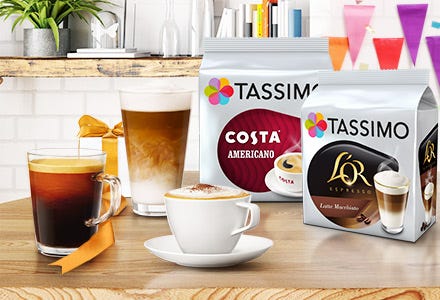
Inspiration: coffee news, tips & recipes

Tassimo Latte vs Cappuccino: Ultimate Guide to Your Favorite Brews

TASSIMO coffee machines

Best Home Coffee Machines: Discover TASSIMO!

Tassimo Joy Black

Tassimo L'Or Cappuccino 8 Discs Roasted Coffee + 8

15 Best Coffee Makers: Your Barista-Quality Coffee At Home

Tassimo vs Dolce Gusto. Who's better? Kev's 2024 Guide
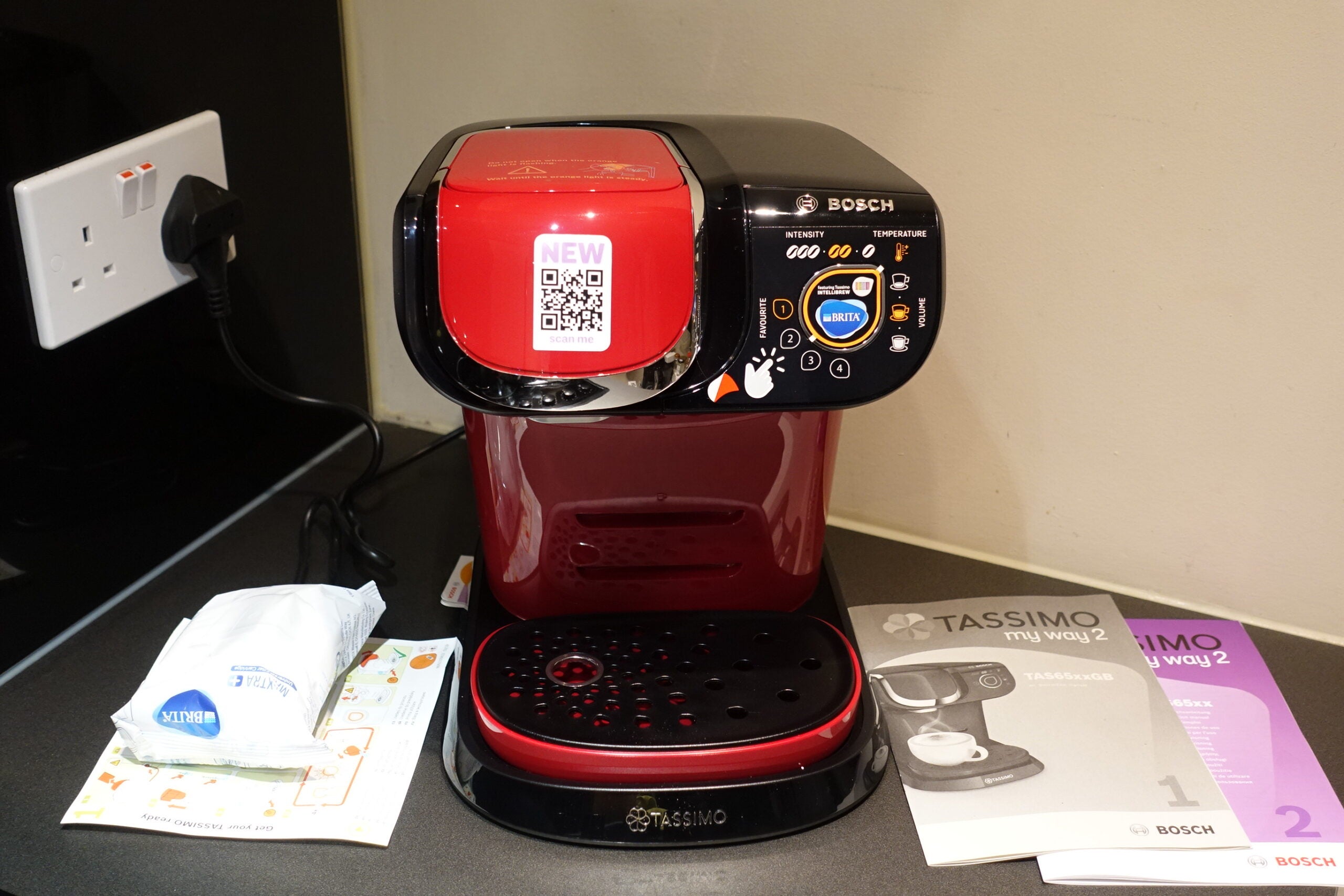
Bosch Tassimo My Way 2 Review
Recommandé pour vous
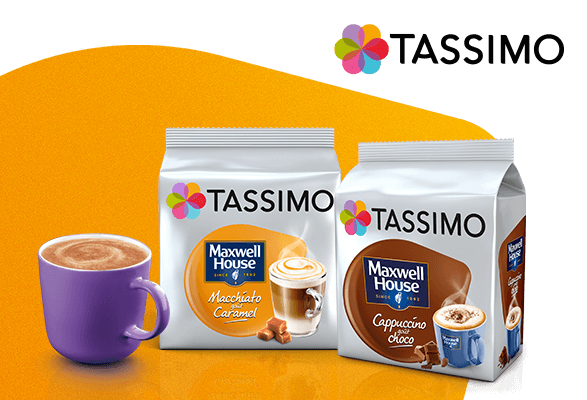 Dosette Maxwell House Cappuccino goût choco, Capsule TASSIMO14 Jul 2023
Dosette Maxwell House Cappuccino goût choco, Capsule TASSIMO14 Jul 2023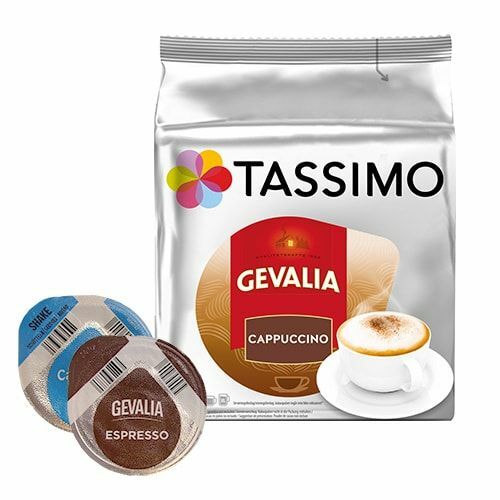 Gevalia Cappuccino - 16 Capsules pour Tassimo à 5,19 €14 Jul 2023
Gevalia Cappuccino - 16 Capsules pour Tassimo à 5,19 €14 Jul 2023 Tassimo L'OR Cappuccino online kaufen14 Jul 2023
Tassimo L'OR Cappuccino online kaufen14 Jul 2023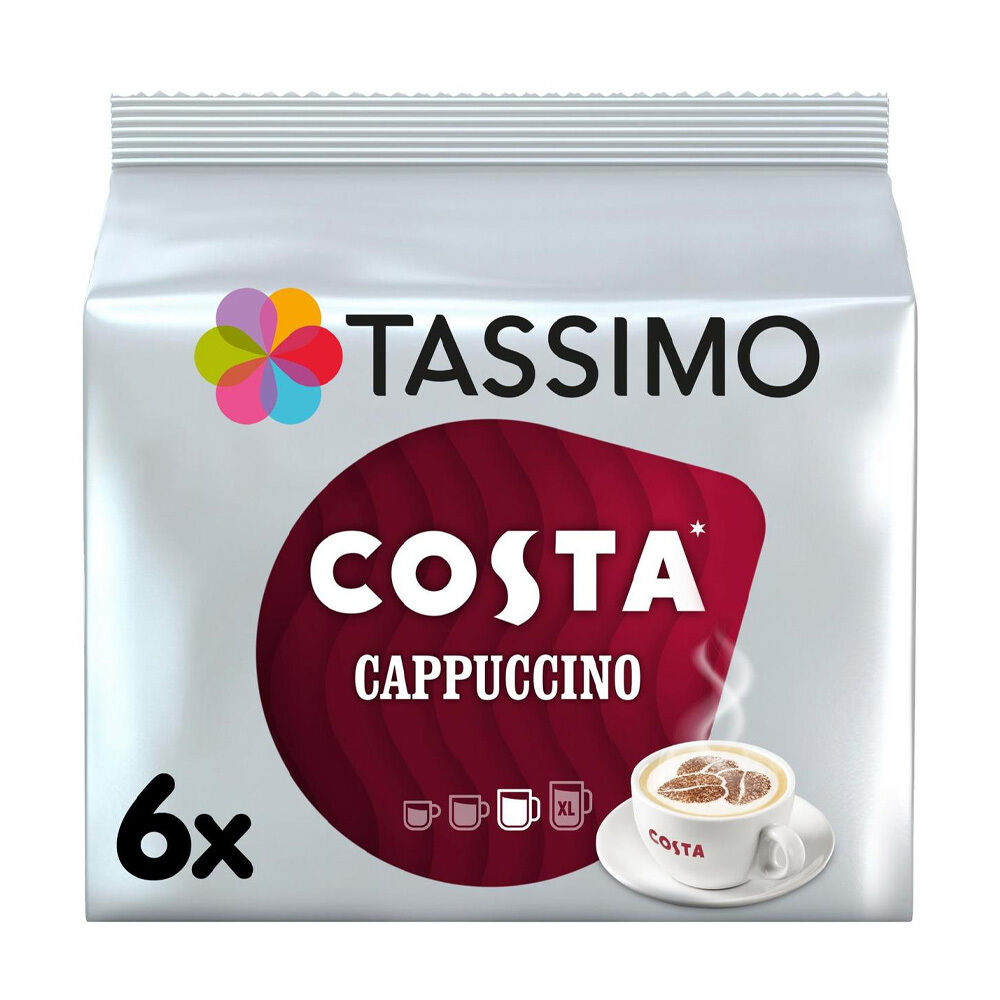 Costa Cappuccino - 12 Capsules pour Tassimo à 6,99 €14 Jul 2023
Costa Cappuccino - 12 Capsules pour Tassimo à 6,99 €14 Jul 2023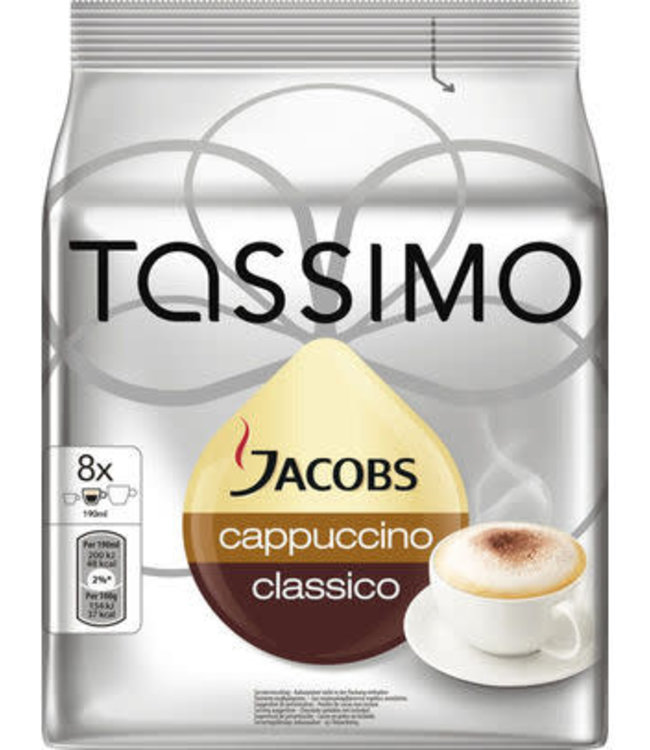 Tassimo TASSIMO CAPPUCCINO CLASSICO 5 X 260 GR B5S5 - Les Tigres e-shop14 Jul 2023
Tassimo TASSIMO CAPPUCCINO CLASSICO 5 X 260 GR B5S5 - Les Tigres e-shop14 Jul 2023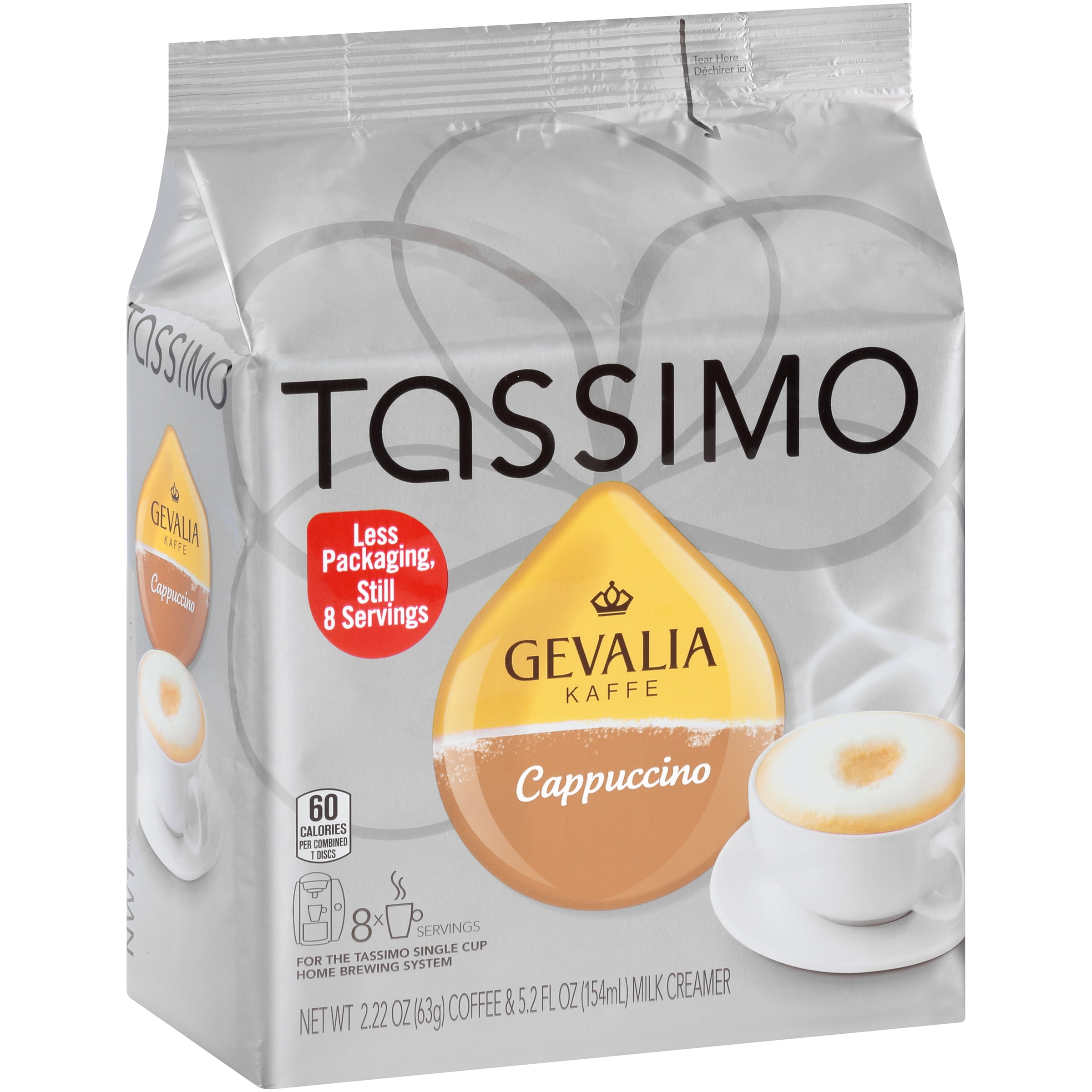 Gevalia Cappuccino Coffee & Milk Creamer T-Disc for Tassimo Brewing System, 16 count14 Jul 2023
Gevalia Cappuccino Coffee & Milk Creamer T-Disc for Tassimo Brewing System, 16 count14 Jul 2023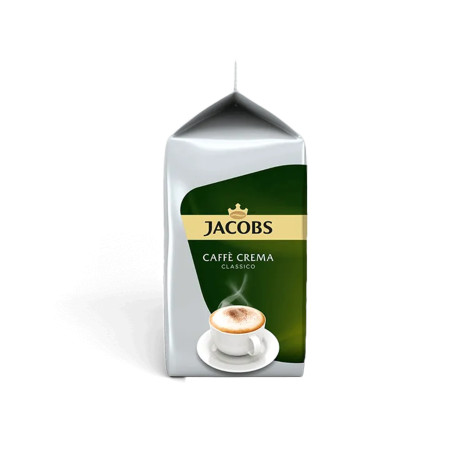 Capsules de café Tassimo Cappuccino Classico (compatibles avec les machines à capsules Bosch Tassimo), 8+8 pcs. - Coffee Friend14 Jul 2023
Capsules de café Tassimo Cappuccino Classico (compatibles avec les machines à capsules Bosch Tassimo), 8+8 pcs. - Coffee Friend14 Jul 2023 Tassimo Costa Cappuccino Coffee Pods 5 Packs 40 Large Cup Size T Disc Pods 215ml14 Jul 2023
Tassimo Costa Cappuccino Coffee Pods 5 Packs 40 Large Cup Size T Disc Pods 215ml14 Jul 2023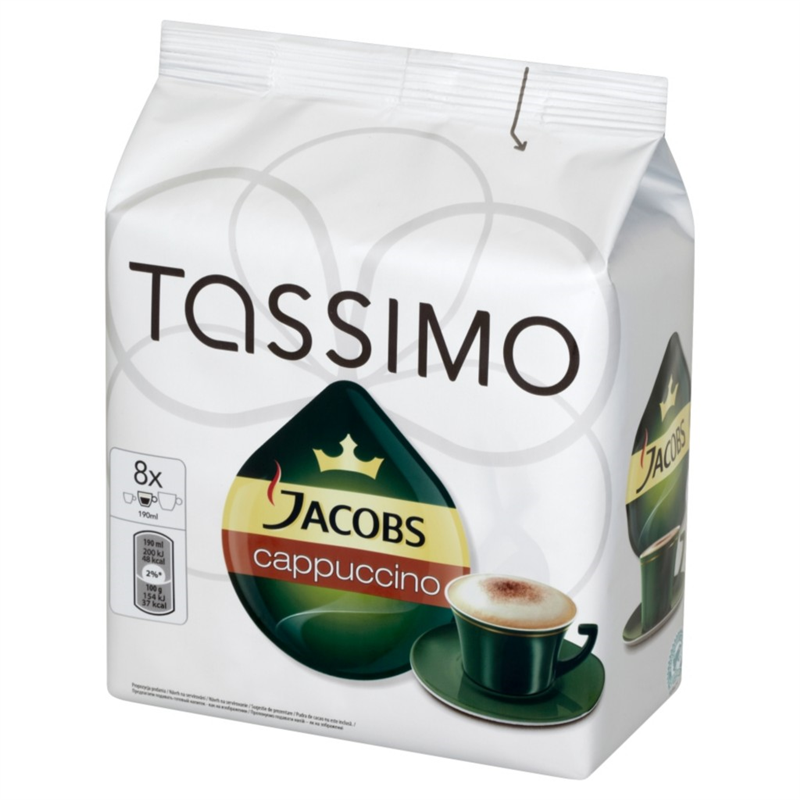 Kawa kapsułki JACOBS Tassimo Cappuccino14 Jul 2023
Kawa kapsułki JACOBS Tassimo Cappuccino14 Jul 2023- Tassimo Jacobs Cappuccino Caffee - The Shop for BOSCH Tassimo machines in Cyprus. - Home14 Jul 2023
Tu pourrais aussi aimer
 Platines Technics SL-120014 Jul 2023
Platines Technics SL-120014 Jul 2023 Brosse miracle vêtementsanti poils cheval : Soin cheval Le Paturon14 Jul 2023
Brosse miracle vêtementsanti poils cheval : Soin cheval Le Paturon14 Jul 2023 DADJU - Nouvelle Vague14 Jul 2023
DADJU - Nouvelle Vague14 Jul 2023 Tronçonneuse Électrique, 1800 W, Guide De 41.5 Cm14 Jul 2023
Tronçonneuse Électrique, 1800 W, Guide De 41.5 Cm14 Jul 2023 Panier Gourmand Bulles et Gourmandises14 Jul 2023
Panier Gourmand Bulles et Gourmandises14 Jul 2023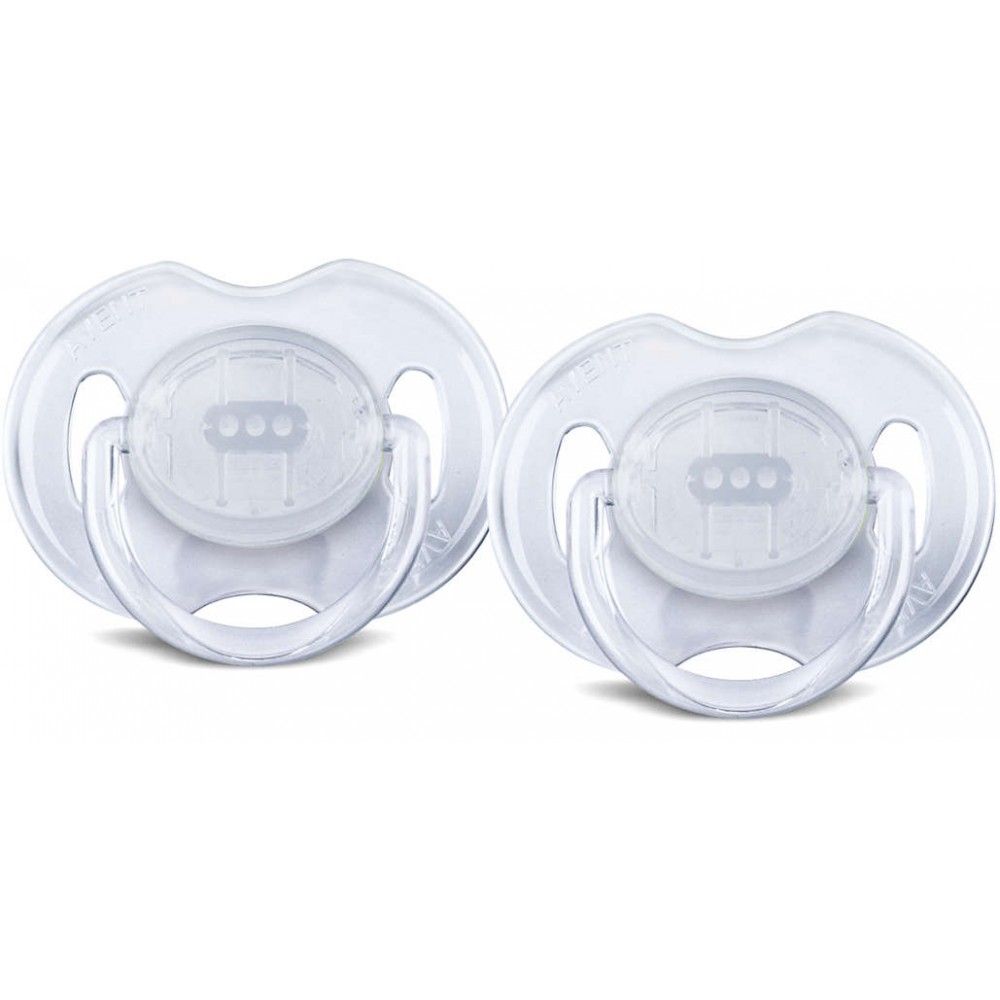 Set of 2 Philips Avent Transparent Silicone Pacifiers 0-6 months14 Jul 2023
Set of 2 Philips Avent Transparent Silicone Pacifiers 0-6 months14 Jul 2023 Micro Flex Air 200mm MICRO14 Jul 2023
Micro Flex Air 200mm MICRO14 Jul 2023 Phare avant gauche, ampoule hir2 de TOYOTA de YARIS 3/5 PORTES DE14 Jul 2023
Phare avant gauche, ampoule hir2 de TOYOTA de YARIS 3/5 PORTES DE14 Jul 2023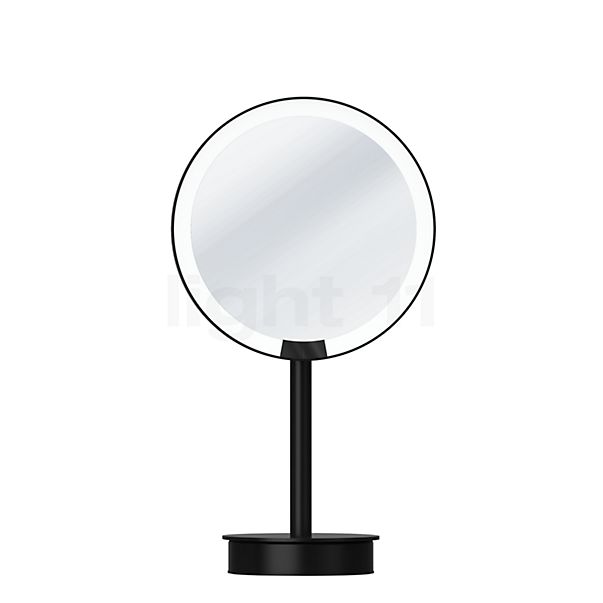 Lampe de table Decor Walther Just Look Miroir de maquillage à poser LED14 Jul 2023
Lampe de table Decor Walther Just Look Miroir de maquillage à poser LED14 Jul 2023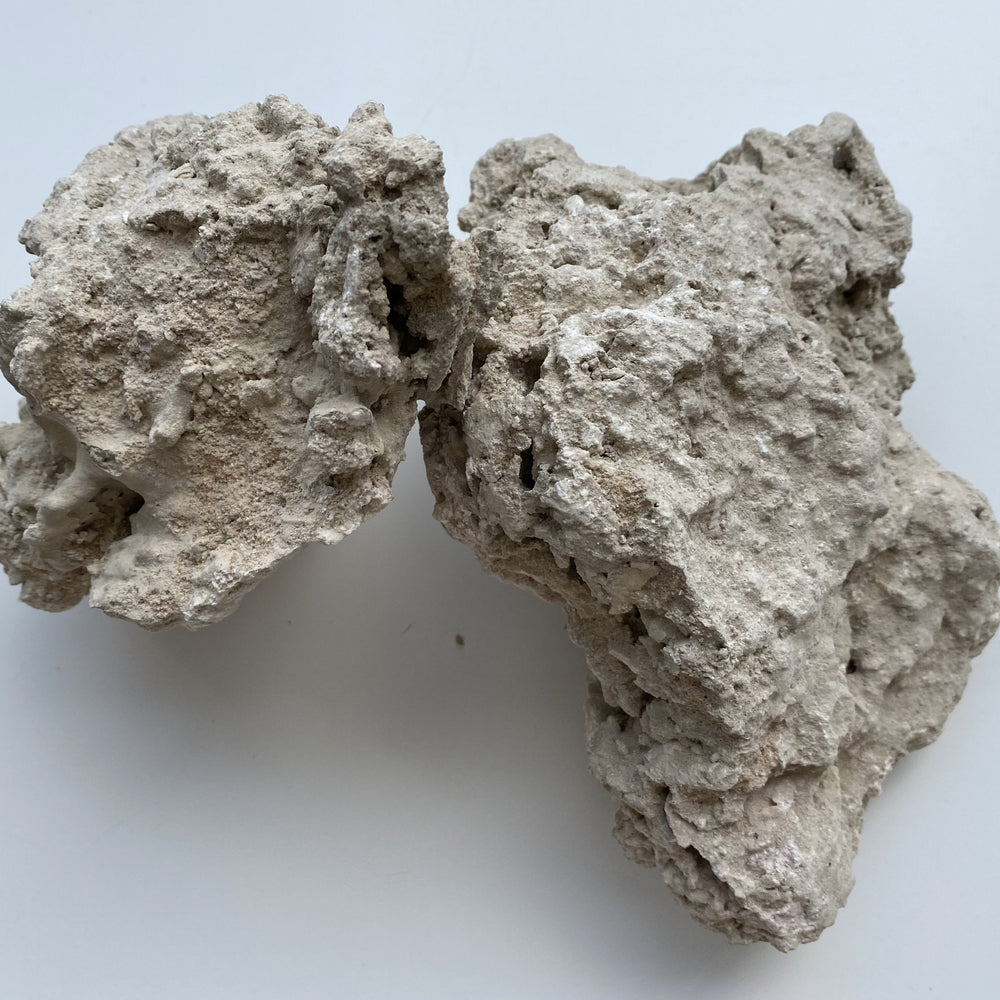 Kanwa, Sel gemme14 Jul 2023
Kanwa, Sel gemme14 Jul 2023
